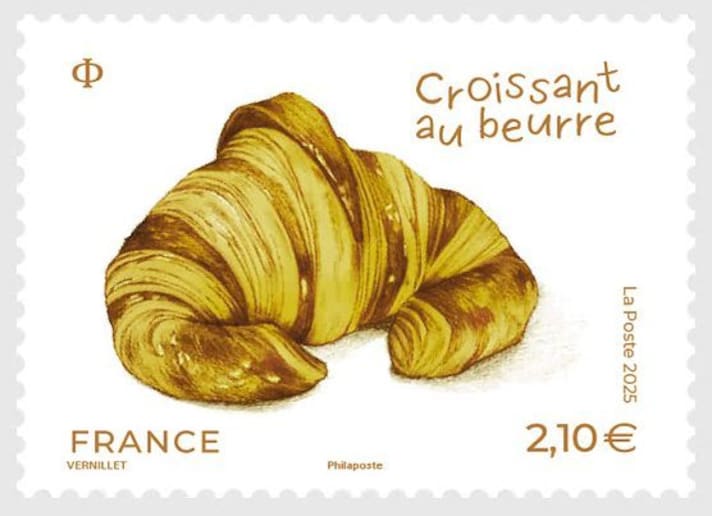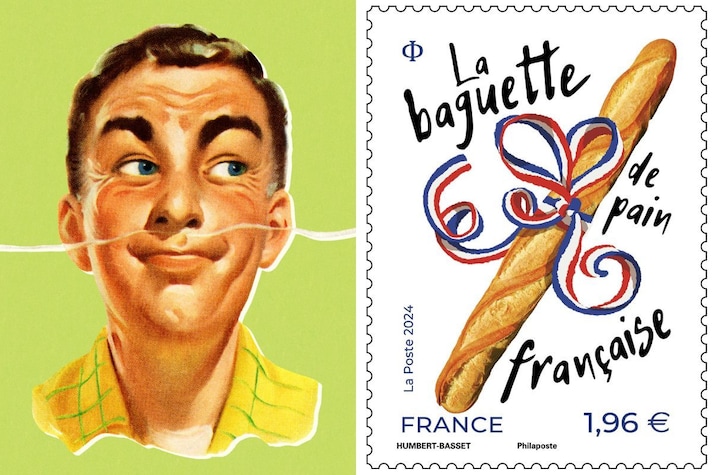
France is the country of love, fashion, and—there's no denying it—incredible buttery pastries. Those croissants that accompany your morning coffee and perfume the streets of Paris like no other. And now, that same unmistakable fragrance will no longer be confined to French bakeries alone , but will travel by mail. Yes, we can confirm that it's exactly what you think: if you receive a letter from France, instead of the anonymous smell of paper, you'll be enveloped by the unmistakable fragrance of croissants. All this has been possible for just a few days now thanks to an initiative by the Confédération Nationale de la Boulangerie Pâtisserie Française and La Poste (the French postal service), which have just issued an (iconic) stamp that, when rubbed, releases the scent of croissants.
French Perfume Around the World
As mentioned earlier, La Poste's idea was to celebrate French gastronomy with an "aromatic" stamp representing one of the country's most beloved symbols. When rubbed, it releases the distinctive aroma of the croissant au beurre, with its sweet and inviting notes of butter and golden pastry. A tribute to a culinary tradition that has become a true cultural heritage, the "sensorial" stamp has been available for a few days and will be worth €2.10.

In introducing this initiative, Dominique Anract, president of the National Confederation, emphasized that behind every good croissant, there's always a passionate artisan. "The croissant au beurre," Anract explained, "is distinguished by its golden, crispy crust, light texture, and delicately buttery flavor. It's the emblem of our gastronomy, the favorite Viennese pastry of all French people. A good croissant is the signature of the baker who creates it: from the quality of the butter to the mastery of the tourage, every step is crucial."
This Isn't The First Stamp That "Smells Like Food"
Having gotten this far, you might think the idea is exceptional and unprecedented. In fact, this isn't the first time France has experimented with an olfactory stamp. The French postal service previously launched a very similar stamp. When rubbed, it released the scent of freshly baked baguettes.

Now a universal symbol of French baking, with its aroma "trapped" in microcapsules applied to the stamp's surface, this idea was conceived as a tribute to millers and bakers, and also responded to the baguette's recent recognition as an intangible cultural heritage item by UNESCO. In short, the "scented stamp" is not a spur-of-the-moment idea, but an evolving French tradition. With the croissant, the French Post Office is making a gesture that blends cultural communication, sensory marketing, and gastronomic pride.
A Centuries-Long History: The Croissant That Comes From Vienna
Although an undisputed symbol of the French breakfast, the croissant wasn't actually born in Paris. Its origins, in fact, can be traced back to Austria and the kipferl, a crescent-shaped leavened cake already popular in the Middle Ages. Rustic almond-based pastries, kipferl were created in 1683 in Vienna to celebrate the victory over the Ottoman Empire. The crescent moon was a symbol of the defeated enemy.

Fate changed in the 19th century when two Austrian entrepreneurs opened the Boulangerie Viennoise in Paris, introducing their specialty to the French capital. From that moment on, the recipe changed radically. In the early 20th century, chef Sylvain Claudius Goy, a pastry enthusiast, decided to overhaul everything and create a crescent-shaped product similar to the kipferl, but with leavened, flaky pastry. Thus, in 1915, the product we all love, the croissant, was born, in a modern and revisited version.
;Resize,width=767;)
